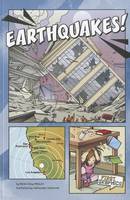 At 5:24am on Friday 24 May, 1968, an earthquake measuring 7.1 on the Richter scale struck the West Coast. The earthquake caused damage up and down the Coast, but Inangahua Junction suffered the most. 70 per cent of the dwellings in the town were rendered uninhabitable and three people died.
At 5:24am on Friday 24 May, 1968, an earthquake measuring 7.1 on the Richter scale struck the West Coast. The earthquake caused damage up and down the Coast, but Inangahua Junction suffered the most. 70 per cent of the dwellings in the town were rendered uninhabitable and three people died.
What happened?
Inangahua Junction is at the point where the Inangahua River meets the Buller River, 30 kilometres north of Reefton and 45 kilometres east of Westport. After the gold rush years of the mid-19th century, the population of Inangahua dropped until there were only about 300 inhabitants at the time of the 1968 earthquake.
The earthquake struck at 5:24am on Friday 24 May, 1968. It measured 7.1 on the Richter scale and caused damage throughout the West Coast; however Inangahua Junction suffered the most and was quickly declared a disaster area. The emotional impact of the earthquake was felt widely throughout the country, because people were still recovering from the shock of the Wahine sinking on 10 April earlier that year.
Had the earthquake been centred in an area where there was a higher population, there would probably have been a greater loss of life. As it was, three people died. Two women were killed when a landslide struck a house, while another died of her injuries later in hospital.
Around the Inangahua area landslides and other upheavals blocked the roads, buckled the railway lines, and cut off the town. Communication with the outside world was not possible until two and a half hours after the earthquake. In the meantime the local inhabitants had to be ready to spend the night in the stricken town in case help could not reach them.
For a while the Buller River was dammed by a massive landslip about 6 kilometres upstream from Inangahua, and threatened to flood the town. However, unlike what happened in the Murchison earthquake of almost 40 years before, helicopters could be used to take people out of the disaster area. By 9:30pm on the day of the earthquake almost 200 people had been lifted out and then bussed to Reefton.
How many died?
Three people died. (Three were also killed in a rescue helicopter accident at the time.)
Other events and outcomes
The earthquake damage was made worse by more and more aftershocks. 15 earthquakes measuring more than 5 on the Richter scale were recorded over the next four weeks.
Heavy rain fell the next day and made it more difficult to clear the roads blocked by landslides. Houses suffered more damage as the rain came in through the holes in the roofs.
Roadblocks were set up outside Inangahua Junction to control who went into the disaster area. Police were on patrol to keep out sightseers and looters of the empty houses.
Food and other supplies were sent from other parts of New Zealand, and the Inangahua Earthquake Disaster Relief Fund was set up to help the refugees.
The railway line was reopened three weeks later and people returned to their homes in Inangahua within the month. The roads took longer to clear.
More information and sources
- Caught in the crunch: earthquakes and volcanoes in New Zealand, Rebecca Ansell, Auckland, 1996.
- Inangahua earthquake in Te Ara
- New Zealand tragedies: earthquakes, Anna Rogers, Wellington, 1996.
- Inangahua earthquake, 24 May 1968, Information Files, Christchurch City Libraries.
- Search our catalogue for more about the Inangahua Earthquake.
- The day the earth moved from GNS Science
- After the Inangahua earthquake Radio NZ documentary on Ngā Taonga Sound & Vision
Disasters
- Go to our page on New Zealand disasters
- Read some true kids books about disasters
- Read some true adult books about disasters
- Read some stories about New Zealand kids in disasters
